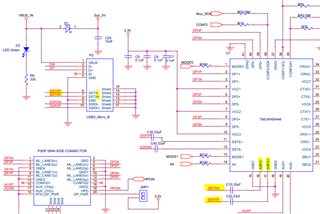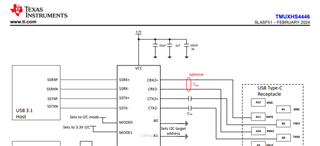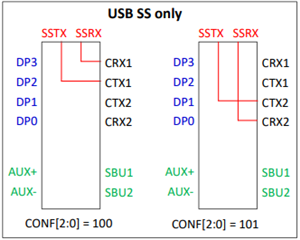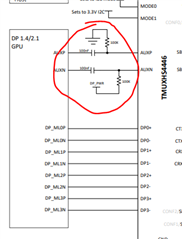Other Parts Discussed in Thread: TMUXHS4446
Tool/software:
Hi,
I'm working on a design based on this EVM. There's inconsistency between various docs on how to connect USB 3.0 to the host CPU so I'd like to clarify please
1. This doc: "TMUXHS4446 Evaluation Module SLAU882 – FEBRUARY 2024" shows a crossover between TX and RX between the micro USB B connector and TMUXHS4446. There also seems to be a mistake on the TX+ and TX- connections at the connector.

2. The datasheet for TMUXHS4446 (SLASF51 – FEBRUARY 2024) doesn't have a crossover from TX to RX on the USB3 host side.

Is it a case that the EVM above is showing the design for sink sink rather than host side? Which connection scheme should I use for connecting TMUXHS4446 to the host CPU USB3.0 port?
thanks
Ciarán



